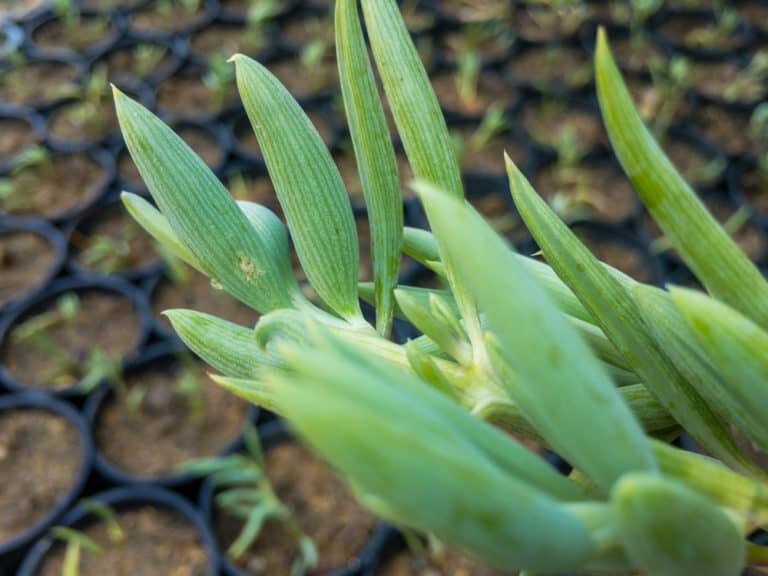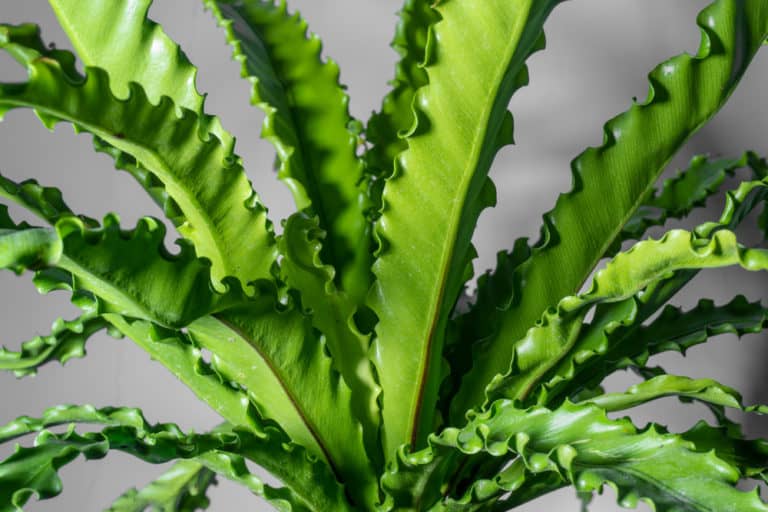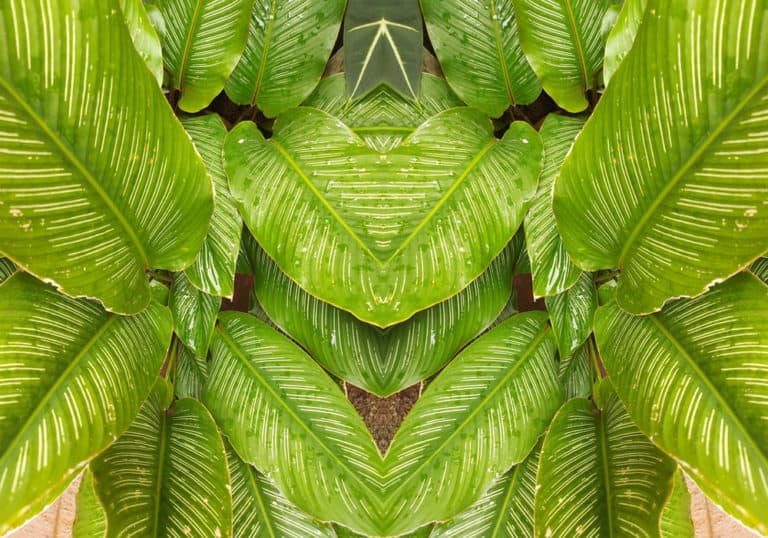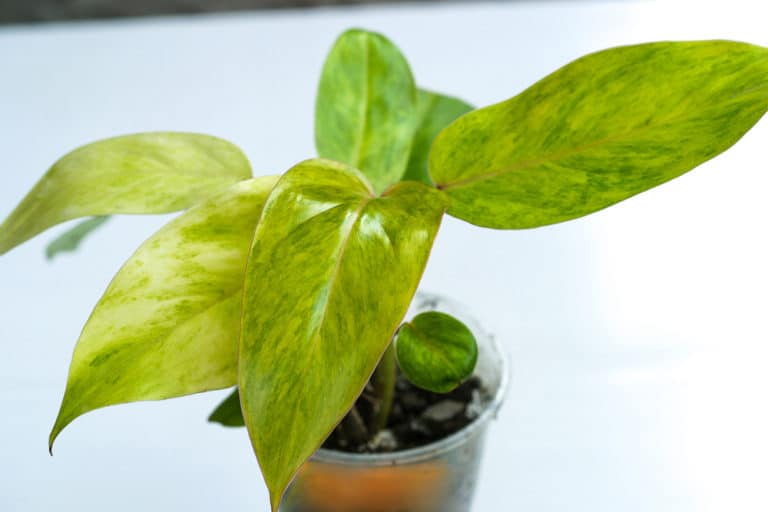Begonia Maculata ‘Polka Dot’ Care Guide (2024)
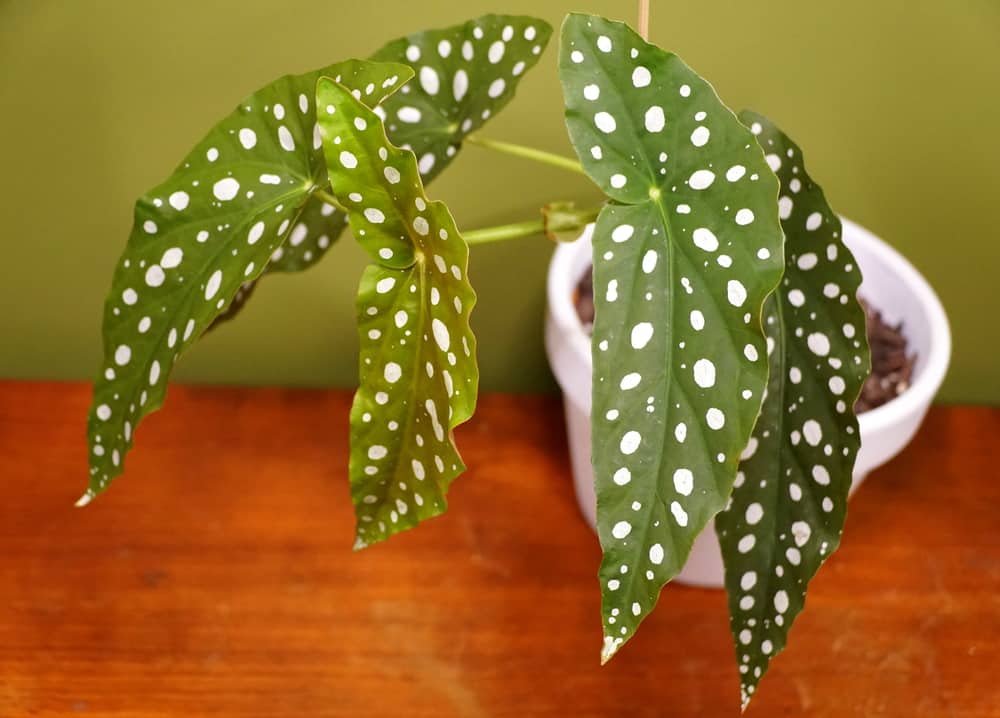
Among the wide range of options you have for begonia plant species, Begonia maculata is one of the best choices. The foliage is its great attraction as it resembles the shape of angel wings. On top of each leaf surface are the polka dot design making it look completely adorable.
Plant Profile:
Common Name: Polka dot begonia, Spotted begonia
Scientific Name: Begonia maculata
Type: Perennial shrub
Origin: Southeast Brazil
Habitat: Tropical rainforests
Size: 18-24 in. (45-60 cm)
Toxicity: Toxic to pets and humans
Colors: Olive-green leaves with silver polka dots
Blooms: White flowers with yellow center; appears from Spring to fall
Plant Care:
Light: Light shade, bright indirect light
Watering: Average water needs
Temperature: 65°F to 86°F (18°C to 30°C)
USDA Zone: 10b to 11
Air humidity: High humidity
Soil pH: 6.1 to 7.5 (mildly acidic to neutral)
Fertilizing: Balanced, liquid fertilizer every 2 to 4 weeks (active stage)
Propagation: Cuttings
Re-Potting: Annual repotting during spring
Pruning: Prune back twice a year
What’s Unique About Begonia maculata?
The good thing about the Begonia maculata plant is that it’s already a beauty even only with its foliage on. In fact, those small white blooms are just an added bonus to its dotted leaves. The plant is showy and attractive making it a perfect indoor ornament.
Growing Begonia maculata is also very easy. You wouldn’t need to worry about this plant so much. It can pretty much exist on its own with very little care and maintenance. If you’re looking for the perfect begonia species to add to your collection, make sure to include this one. You’ll have no regrets, for sure!
Appearance
The most distinct thing you’ll remember about Begonia maculata’s appearance is its dotted leaves. It has an exotic look with those uniquely patterned foliage. They’re also known as cane begonias because their stems are bamboo-like.
This plant is a perennial shrub. It can grow up to 18-24 inches (45-60 cm) in height.
Foliage
This polka dot begonia has a foliage that resembles the shape of an angel’s wings. However, they are asymmetrical in size. The leaves are olive-green in color on the front. They are visibly dotted with silvery spots on the surface. The underside of each leaf is colored deep to crimson red .
The foliage of Begonia maculata is herbaceous and evergreen. The leaves are the major attraction in itself. Therefore, it is not surprising that they are popularly grown because of their leaves rather than their flowers. Thus, they make a striking foliage plant that is perfect for your indoor tropical setting.
Flowering
Aside from its beautiful foliage, the Begonia maculata also produces beautiful blooms. These white flowers appear in clusters and are produced only on one stem. They drape over the plant’s foliage. Each white bloom is accentuated by a yellow center.
Begonia Maculata flowering happens during seasons of spring to fall. To initiate flowering, make sure to add enough fertilizer during these stages. Your plant would be needing much energy and nutrients to produce such flowers.
If in case flowering does not occur, it’s totally fine. Begonia maculata blooming is not much of an issue because the plant remains beautiful even without it.
Size and Growth
The size of Begonia maculata could reach up to 18-24 inches (45-60 cm) in height and up to 4 inches in width. They’re a fast grower plant. Given ideal growing conditions, this begonia species will easily grow well.
Although, there are ways to keep the plant’s size down through judicial pruning of leaves and branches. A plant that gets leggy needs more exposure to light. If the Begonia maculata growth rate slows down, the plant must be suffering from lack of nutrients. Another reason is that there may be problems with over or underwatering.
Part of the polka dot begonia care is making sure it follows the normal growth rate.
Fragrance
This plant may be stunning in appearance but don’t expect it to emit a fragrant odor. The Begonia maculata fragrance is non-existent. Neither the leaves nor the flowers gives off any pleasant or unpleasant smell.
If you want to plant fragrant begonia species, there are many options you could explore. The three of the best fragrant begonia varieties include Begonia odorata ‘Angelique’; Begonia odorata ‘Pink delight’ and Begonia odorata ‘Red glory’. These plants will not only give you beautiful flowers but it will also bless you with fragrant scent.
But despite the lack of fragrance, Begonia maculata plants will most definitely remain as a show-stopper.
Toxicity
If you’re worrying over Begonia maculata toxicity, that’s completely justifiable. This plant, like all other species of begonia, contains soluble calcium oxalates. These substances are the toxic materials that could bring harm to both pets and humans once ingested.
So, we recommend that you handle your spotted begonia with utmost care in order to protect your kids and pets at home.
For Humans
If you happen to inadvertently ingest any part of this begonia houseplant, you’re most likely to experience severe irritation. Such includes numbness and burning sensation on your oral parts like mouth, lips, throat, and tongue. These affected areas may also exhibit swelling.
Apart from that, this spotted houseplant could also cause gastrointestinal problems leading to nausea, abdominal pain and diarrhea. Make sure to immediately seek medical help once those symptoms get visible.
Keep this plant away from the reach of your children. If you are handling them, always use protective gloves to avoid direct contact with the plant’s sap. Better safe than sorry.
For Pets
Your pets will suffer the most if they ingest the parts of this Begonia maculata succulent. The calcium oxalates are more toxic to them. Their bodies will respond negatively by showing signs of salivation, vomiting, and even kidney failure.
The most toxic part of this plant is the underground part. So, make sure your pets don’t dig up the plant. We know they can be very naughty. The last thing we want is to see them chewing on our begonia plant.
If in any case it happens, bring your pets to the nearest vet doctor for first aid and appropriate treatment.
Also, make sure to check out our in-depth Begonia rex plant care guide.
Suggested Uses
There are numerous ways by which you can enjoy your Begonia maculata plants. They’re a great ornamental plant to add attraction to your outdoor landscape. They can be hanged in baskets or potted in fancy containers.
Aside from that, this species will also make a striking indoor plant. It adds to the tropical vibe you wish to achieve for your interior. It’s a pretty accent to center tables or the bare windows. The plant is easy to care for so they’ll most likely survive in these environments.
You could also include them in your entire begonia collection. There are more than a thousand species to collect just from this genus alone!
Begonia Maculata Care
We have mentioned earlier that care for Begonia maculata isn’t a demanding job to do. The plant is heaven sent not only because it has angel wings-shaped leaves but because it requires less time and attention.
To grow Begonia maculata, it’s important to remember to give just enough light and water.
Light
To begin with, let’s start talking about Begonia maculata light requirements. One thing you have to remember is that it needs bright but indirect light. At some point, the plant could also tolerate lower light conditions.
Keep it away from direct sunlight especially the afternoon sun where the intensities are strong. Such light could cause leaf scorching which irreversibly damages the tissues of the leaves. If the plant is located near a window, it helps to put a sheer curtain to serve as a barrier. You may also place your begonia several feet away from the window.
If light is too low, consider adding artificial light sources fluorescent bulbs.
Watering
Begonia maculata loves moist soil. This means that regular watering is necessary to keep the plant hydrated. However, you should remember not to keep the soil soggy because it will lead to root rot. As a rule of thumb, wait for the topsoil to dry to about 80% to 90% before watering again.
Watering of Begonia maculata can be scheduled once a week or so depending on the prevailing season. When it’s hot, the plant loses more water so you need to quench it more frequently. In the winter season, water is most likely conserved. This is the time when you can cut down watering.
Temperature
The best Begonia maculata temperature ranges between 65°F to 86°F (18°C to 30°C). Since this plant is tropical in nature, it needs a warmer environment. Cold temperatures could lead to serious damages such as leaf browning and even death.
USDA zones between 10b to 11 are ideal for proper growth of begonia. If your plant is located outside, you must bring them in during the night especially when the temperature drops below 59°F (15°C). During winter, your plant must be securely tucked inside your homes to avoid freezing damage.
Make sure to also avoid placing your begonia near drafty locations.
Air Humidity
An integral part of Begonia maculata care is maintaining the right humidity levels. The plant loves high humidity. Therefore, it’s important to mimic the natural environment from where this plant naturally resides.
A lot of times, indoor humidity reaches only on the average level. Thus, there’s a need to employ certain techniques to reach the proper Begonia maculata humidity. One way to increase moisture in the air is through the aid of a humidifier.
You may also mist your begonia from time to time. But, we recommend that you do it only in the morning to prevent fungi from growing.
Soil
A well-aerated potting soil that’s high in nutrients is best for polka dot begonia. In addition to your regular potting mix, you can add equal parts of perlite, pumice, and peat moss. These amendments help create a porous structure.
Since the plant loves moisture, it’s important that the soil retains enough water. Adding orchid bark would help improve your Begonia maculata soil. You can test if the potting mix is well-draining by pouring water into it. If the water drains within a few minutes, then that mix is good for potting.
We also recommend that you use sterilized potting soil. This prevents the plant from developing soil-borne diseases.
Fertilizing
An important aspect of spotted begonia care is the steady supply of nutrients. This is needed especially by potted plants where soil is limited and nutrients can easily get depleted. We advise that you fertilize your begonia every two weeks during its active stage. This will encourage new growth.
You can use an all-purpose, water-soluble fertilizer that’s diluted to half of its strength. Make sure to follow the directions indicated in its label. There’s a great danger of over fertilizing if you aren’t careful in using ready to use fertilizers.
It’s also important to drench the soil with water once in a while. This will help drain out the salt build up that has taken residence in the soil due to chemical fertilizers.
Propagation
Propagation of Begonia maculata is definitely an easy task. Stem cutting is by far the simplest method there is. You can cut a healthy stem making sure it has two nodes in it. Place them in clean water and allow the roots to form.
After sufficient roots have grown, you can transfer the cutting in a new pot. Water the potting soil thoroughly and place the plant in a shaded area. The plant should develop new growth after a few weeks.
Remember to cut stems only when the plant has ceased blooming. Don’t cut stems that still have flowers in them. It’s also best to save Begonia maculata seeds once you notice that the flowers are starting to dry.
Re-Potting
Since the polka dot begonia is a fast grower, there’s a need to repot the plant annually. Look out for roots that are already poking out of the pot. That’s a clear signal that your plant is needing a larger container.
Re-potting Begonia maculata has several advantages. This is the perfect time to replace depleted soil with a fresh one. It’s also your chance to check the health of the roots and trim off the dead ones. Repotting is also a good opportunity to divide thick plants and propagate them.
Spring is the best time to do repotting of your begonia.
Pruning
There are important reasons for pruning Begonia maculata. It’s a way of encouraging lateral growths so the plant remains thick and bushy. This is beneficial especially when your begonia is getting a little leggy. Pruning also helps get rid of dead, diseased, and discolored foliage.
There are different ways to prune. One is by cutting back the plant down to its base. This encourages regrowth of the whole plant. You may also cut undesirable branches to maintain the Begonia maculata shape. At times, the required pruning only involves removal of leaves and spent flowers.
Pruning should take place during spring and summer seasons. This time the plant is actively growing so regrowth of the pruned portions will be hastened.
Begonia Maculata Common Problems
Like any other plant species, growing Begonia maculata would also have its own ups and downs. Although it’s generally easy to care for, there are times when it gets vulnerable. If the growing conditions aren’t right, your plant will most likely encounter trouble.
However, don’t panic! The common Begonia maculata problems surely have their solutions.
Pests
Luckily for this species, pests aren’t much of a problem. They’re generally pest-free. However, they can also be an object of interest for mealybugs and whiteflies. These organisms normally mulch on the plant’s tissues sucking the sap. In return, they leave brown lesions on the leaf surface.
To deal with Begonia maculata pests, prevention is always better than cure. Make it a habit to check on your plants for any presence of foreign organisms. Manually remove them once spotted. You may also scrape them off by spraying water on the surface. Others use diluted dishwashing liquid mixed with neem oil.
Diseases
As for diseases, the common problems are powdery mildew, botrytis, bacterial leaf spot, stem and root rot. Such diseases are caused by pathogens that normally flourish when there’s high moisture level. A combination of high humidity and overwatering typically causes these Begonia maculata diseases.
If the occurrence of diseases is not that serious, you can manage them by lowering the humidity levels around your plant. You also need to minimize watering so the soil doesn’t get soggy. Adjusting the environmental conditions would inhibit the growth of such pathogens.
It also helps to isolate diseased plants until they’ve fully recovered. If infestation gets severe, you can use appropriate fungicides to treat the plant.
Growing Problems
If the growing conditions are right, your Begonia maculata will surely flourish. The only serious problem you’ll encounter will be caused by overwatering. There are numerous issues that could arise if there’s always excess moisture in the pot.
Overwatering can invite growth of unfavorable organisms like pathogens. It can cause root rot and other related diseases. In return, the plant is becoming less and less vigorous. Thus, growth becomes stunted.
If these conditions persist, there’s a high chance that you’ll lose your beautiful begonia. We hope that you won’t reach this point. So, always remember to give your plant a happy place.
FAQ
How do you care for a Begonia maculata plant?
For better growth, provide your Begonia maculata with bright, indirect light, enough water, high humidity and warm temperature. Don’t overwater or expose your plant to low temperatures.
Is Begonia maculata an indoor plant?
Yes, you can grow your Begonia maculata indoors. Since the plant requires bright indirect light, it’s ideal for indoor locations. Just make sure to maintain high humidity and warm temperature.
Is Begonia maculata a rare plant?
Although this plant is a little exotic in appearance, you can easily get hold of it from online garden stores. Try typing Begonia maculata common name like polka dot begonia, on your search bar.
Does Begonia maculata like humidity?
As a tropical plant, Begonia maculata likes high humidity. There must be a sufficient moisture level in the air to help this plant thrive well.
How do you keep Begonia maculata bushy?
Pruning is the way to keep your begonia bushy. Once it gets leggy, you can cut it back down to its base. This encourages lateral growth of your begonia.
Do Begonia maculata like to be root bound?
Begonia maculata likes to be a little root bound. Nevertheless, it’s recommended to do repotting annually to replenish the depleted soil with a fresh one.
Can you propagate Begonia maculata from leaf?
Yes. You can propagate a begonia using leaf cuttings. You can cut a leaf including its petiole. Insert it in the potting soil until roots start to form.
Should I mist my Begonia maculata?
Yes. Since begonia likes high humidity, a regular misting during dry conditions is helpful. However, it must be done early in the morning to avoid moisture build up that could invite the growth of pathogens.


